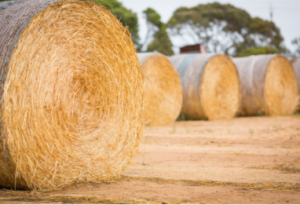 Baling twines, or BalingTwine baler twine, are lightweight synthetic or sisal twined ropes that bind together a smaller amount of fibrous fibre material in a neat and compact form. Baling twines can be formed into any desired size and shape, depending upon the application. Twine widths vary from very narrow, about 2 inches, to extremely wide, such as several feet. There are also specialized shapes such as ovals and rectangles. These specialty shapes are usually used for decorative purposes and do not hold a lightweight rope.
Baling twines, or BalingTwine baler twine, are lightweight synthetic or sisal twined ropes that bind together a smaller amount of fibrous fibre material in a neat and compact form. Baling twines can be formed into any desired size and shape, depending upon the application. Twine widths vary from very narrow, about 2 inches, to extremely wide, such as several feet. There are also specialized shapes such as ovals and rectangles. These specialty shapes are usually used for decorative purposes and do not hold a lightweight rope.
Baling machines use baler twine to make small bundles of thin, lightweight fibres that can be pulled through tight spaces or braided into longer strands for additional strength and toughness. These fibre bundles are excellent for threading braids or attaching thin strands of yarn onto larger fibres for strength and durability. Baling machines can also be used to tie shoelaces, tie medical ID tags, or string beads and coloured threads onto larger fibres for artistic projects. These materials are then passed through centrifugal forces to form a thick and strong rope that can be used for anything from carrying luggage to constructing beautiful art pieces.
BalingTwine baler twine is made from several natural fibres, including cotton, polyester, nylon, rayon, silk, wool and even synthetic fibres such as polypropylene. These fabrics can be woven into any desired shape and thickness and dyed to match any colour. Baling is an old method that originated in India and Africa but has become more popular with the advent of modern technology and manufacturing techniques. The modern method of baling involves a large amount of spinning, which causes the fibres to be spun faster than usual and forms what is known as long strip fibres. These fibres are strong and durable and can be woven into many shapes and sizes depending on the need.
The fibre is first soaked in a solution of glue and polypropylene. After this is completed, the solution is removed, and the strip is then cut to the desired size and shape. The glue and polypropylene are then applied to the strip and allowed to dry until it hardens into a tough and strong baling twine. This process is often referred to as’ setting’ the bond because once the bond is set, the baling can take on a stronger and longer-lasting form than if it was not tied.
An interesting fact about bales of straw is that although most people associate them with straw bales, they can be made from any fibre. Bales can be made from polypropylene, nylon, acrylic, cotton, wool, soy, and other materials. A few manufacturers also specialize in making straw balers for specific industries like the medical and food industry.
There is no better material to make the lightweight but strong BalingTwine baler twine as an environmentally friendly product. With bales of straw being made into baler twine products by a company in Ohio, it shows how far our culture has come. Not only are we aware of our impact on the environment, but we are also looking to make positive changes. Today, more people realize the importance of using alternative materials and have turned to baler twine for assistance.